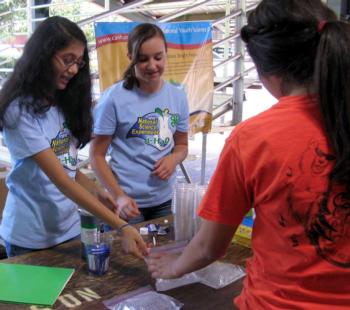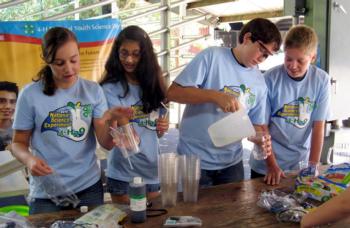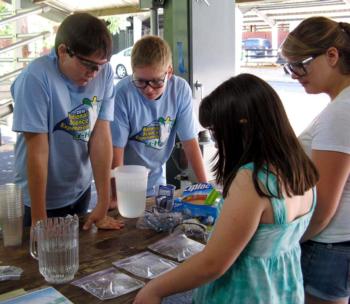4-H Delivers
Tuolumne County 4-H hosted the 2010 National Youth Science Experiment
 The Issue
The Issue

Tuolumne County is located in the foothills and mountains of central California with winter snow, rushing rivers and beautiful lakes and reservoirs. When your water comes from snowpack, and seems to be in abundant supply, it’s taken for granted. Many youth, and adults for that matter, aren’t aware of the part water plays in our community. The rising snow line caused by global warming is affecting the environment and our two largest industries - logging and recreation.. Our summers are hotter and drier and the lower elevation reservoirs aren't filling. Water quality issues are another concern. Tuolumne County 4-H hosted the National Science Experiment, 4H2O, to focus attention on water and water quality and what we, in our rural county, can do to protect it.
What did 4-H do?
Within the 4-H program, we recruited a team of four 8th grade youth members and a volunteer adult leader who is a water scientist. They became our SET Team. We partnered with the Mother Lode Fair Board of Directors, who agreed to co-sponsor our event, which meant they waived the facility rental fee. The team held the experiment during our fall outdoor Field Day. It featured a variety of 4-H projects, was open to all current and new 4-H families and concluded with a barbecue lunch and games for children of all ages. The event was announced in the 4-H newsletter, the Union Democrat and on mymotherlode.com. Using funding provided by Toyota, Time Warner Cable, California Landscape Contractors Association and the California 4-H Foundation, the team purchased supplies, t-shirts, and created handouts.
Approximately 75 youth and their parents participated in the first experiment. The following week, approximately 25 more participated when the team repeated the experiment at the close of 4-H Achievement Night. The next week, during the 4-H community club meetings, families were given a handout to use to assess their own carbon footprint.
The Payoff
The youth team learned about the carbon cycle and increased their own awareness of water issues. They practiced teamwork and public speaking. The participants, including adults, were able to see how CO2 affects water, ask and answer questions and draw their own conclusions about how CO2 contributes to global warming. This is how scientists learn! Continued discussions in our clubs are focusing on families and our community, our carbon footprint and our environmental impact.
Author: Sue Moore, Tuolumne County 4-H YD Program Manager





